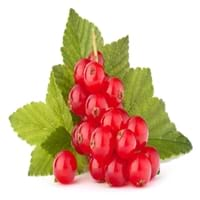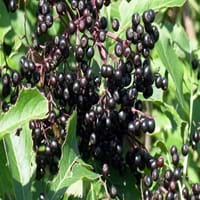Health Benefits
Cancer prevention, Gout treatment, Heart care, Regulation of heart rate, Treatment of rheumatism
Cancer prevention, Heart care
General Benefits
Anti oxidant properties, Controls blood pressure, Cures fever, Digestive aid, Healing of wounds, Helps in weight loss, Strengthens bones
Anti oxidant properties, Anti-inflammatory properties, Boosts immune system, Controls blood sugar levels, Cures fever, Digestive aid, Eye care, Fights against infections, Flu treatment, Helps in weight loss, Maintains healthy cholesterol level
Skin Benefits
Brightens and lightens complexion, Reduces wrinkles, Treatment of acne
Anti-aging benefits, Skin rejuvenation
Hair Benefits
Protects hair
Promotes longer and healthier hair
Allergy Symptoms
Abnormally rapid heart rate, Anaphylaxis, Breathing difficulty, Hives, Itching, Swallowing difficulties
Abdominal pains, Asthma, NA, Sneezing, Sore throat
Side Effects
Possibly unsafe during pregnancy
Diarrhoea, Nausea, Vomiting
Lactating Women
Yes
Not Available
Best Time to Eat
Best if taken as a breakfast (or empty stomach), As a snack in the late afternoon, Don't eat after meal, Morning time (before lunch)
As a snack in the late afternoon, Don't consume at night and before bed, Eat the fresh ones, avoid mixing with any other foods, don't eat after meal., Morning time (before lunch)
Vitamin B5 (Pantothenic Acid)
Vitamin C (Ascorbic Acid)
Vitamin E (Tocopherole)
Not Available
Vitamin K (Phyllochinone)
Not Available
Lutein+Zeaxanthin
Not Available
Calories in Fresh Fruit with Peel
Calories in Fresh Fruit without Peel
Not Available
Not Available
Calories in Frozen Form
Not Available
Not Available
Calories in Canned Form
Not Available
Not Available
Varieties
Rovada, Stanza, Red Lake, Junifer and Jonkheer van Tets
Adams, Black Beauty, Black Lace, Johns, Nova, Variegated and York
Taste
Sour, Tart
Juicy, Sweet
Soil Type
Moist, Well-drained
Sandy, Well-drained
Climatic Conditions
Cold
Warm to hot climate
Facts about
- The albino version of red currants known as white currants, are often sold as different fruit.
- Red currant tea is healthy substitute for coffee.
- There are more than 150 varieties of red currants.
- According to a superstitious belief, the "elder tree" was supposed to ward off evil influence & give protection from witches.
- Branches from its tree are also used to make fujara, koncovka & other Slovakian flutes.
Top Producer
Russia
United States of America
Other Countries
Belgium, France, Germany, Ireland, Italy, Netherlands, Poland, Portugal, Scotland, Spain, Sweden, United Kingdom
Colombia, India, Mexico
Top Importer
Germany
Not Available
Top Exporter
Russia
Not Available
Botanical Name
Ribes rubrum
Sambucus nigra
Synonym
Not Available
Not Available
Subkingdom
Tracheobionta
Tracheobionta
Division
Magnoliophyta
Magnoliophyta
Class
Magnoliopsida
Magnoliopsida
Subclass
Rosidae
Asteridae
Order
Saxifragales
Dipsacales
Family
Grossulariaceae
Adoxaceae
Species
R. rubrum
S. nigra
Generic Group
Saxifrage
Moschatel
Difference Between Red Currant and Elderberry
We might think that Red Currant and Elderberry are similar with respect to nutritional value and health benefits. But the nutrient content of both fruits is different. Red Currant and Elderberry Facts such as their taste, shape, color, and size are also distinct. The difference between Red Currant and Elderberry is explained here.
The amount of calories in 100 gm of fresh Red Currant and Elderberry with peel is 56.00 kcal and 73.00 kcal and the amount of calories without peel is Not Available and Not Available respectively. Thus, Red Currant and Elderberry belong to Low Calorie Fruits and Low Calorie Fruits category.These fruits might or might not differ with respect to their scientific classification. The order of Red Currant and Elderberry is Saxifragales and Dipsacales respectively. Red Currant belongs to Grossulariaceae family and Elderberry belongs to Adoxaceae family. Red Currant belongs to Ribes genus of R. rubrum species and Elderberry belongs to Sambucus genus of S. nigra species. Beings plants, both fruits belong to Plantae Kingdom.









